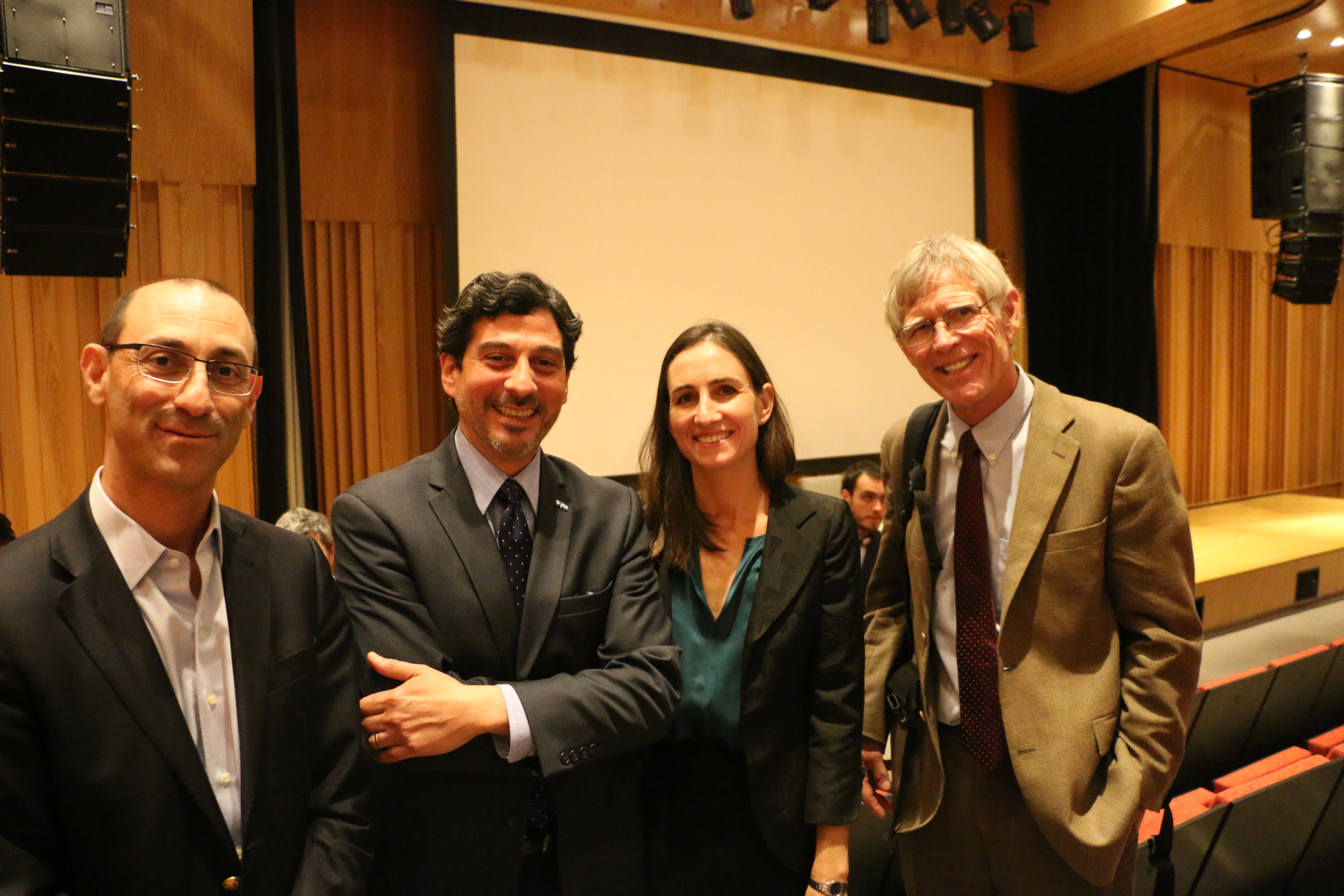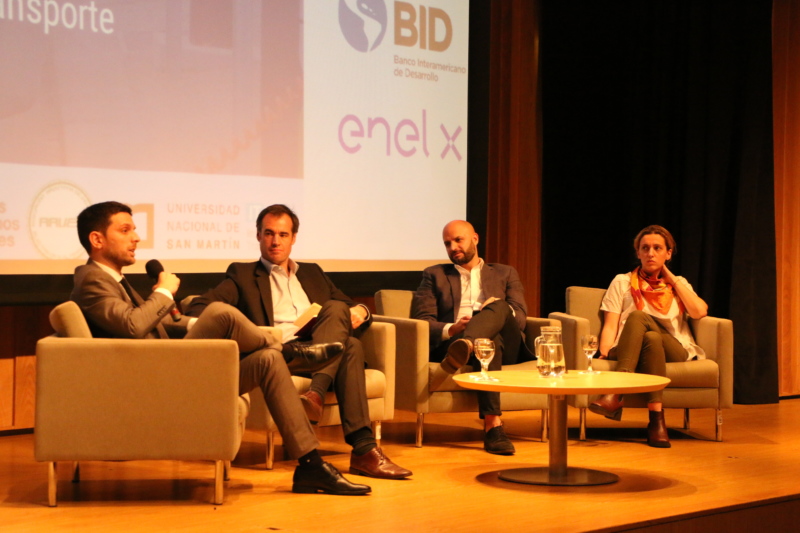Bolivia & the Global Fight Against Climate Change
In the past year, the Bolivian government has emerged as an outspoken critic of climate change policies.
This post is also available in: Español
At the Fourth Annual Latin America Clean Transport Forum on September 27, government officials, private sector leaders, and international researchers gathered in Buenos Aires to discuss the challenges and opportunities for electric vehicles (EVs) and what global and regional lessons can be used to foster their growth in Argentina. Latin America’s EV market has seen relatively slow growth compared to other regions due to a host of barriers including lower income levels and a lack of financial incentives to compensate for the high price tag of EVs. However, as a recent report by the Dialogue’s Energy, Climate Change & Extractive Industries Program argues, leaders like Colombia, Chile, Mexico, and Brazil have demonstrated that EV policies can be successful in the Latin American context and provide lessons for nascent markets like that of Argentina.
[caption id="attachment_75734" align="alignleft" width="422"] L to R: Jean Paul Zalaquett (Enel X), Guillermo Areas (BMW), Lisa Viscidi (The Dialogue), and Tom Turrentine (UC-Davis)[/caption]
L to R: Jean Paul Zalaquett (Enel X), Guillermo Areas (BMW), Lisa Viscidi (The Dialogue), and Tom Turrentine (UC-Davis)[/caption]
Global EV uptake continues to accelerate each year. The international EV stock is expected to exceed 5 million by the end of 2018 (an increase of 2 million since 2017), with most of this increase concentrated in China, the United States, and Europe. The dramatic drop in lithium battery prices (from $700/kWh in 2010 to a projected $150/kWh in 2025) has significantly lowered EV costs, but in most of the world’s markets substantial incentives are still required to drive uptake. Speakers on the forum’s panel on global trends in electric mobility said that international cases illustrate which incentives and programs have proven most effective in general but also make clear that the optimal strategy is dependent on the market conditions in a given city or country. For example, in Los Angeles and San Francisco, access to high-occupancy vehicle lanes was a primary motivation for 25-40% of EV buyers due to thick daily congestion. In Norway, where EVs account for more than 50% of new sales, half of buyers said free tolls were an important incentive.
[caption id="attachment_75747" align="alignright" width="426"] L to R: Agustín Matteri (UNEP), Carlos Mojica (IDB), Jean Paul Zalaquett (Enel X), and José Barbero (UNSAM)[/caption]
L to R: Agustín Matteri (UNEP), Carlos Mojica (IDB), Jean Paul Zalaquett (Enel X), and José Barbero (UNSAM)[/caption]
A panel of experts on Latin America’s EV markets discussed which strategies have demonstrated success in the region and identified ongoing barriers. High upfront costs remain a significant barrier to electrification of private vehicles, meaning financial incentives will be an important tool. This reality has been recognized in Costa Rica, Mexico, and Colombia, where import and sales tax reductions have helped boost demand for electric vehicles. Loosening restrictions on secondhand vehicle importation could also make less expensive used EVs an option for more consumers.
Another key barrier is the need for widespread charging infrastructure, which often must be in place before consumers feel comfortable purchasing EVs. Widespread home charging is not an option in many Latin American cities where most people live in apartment buildings, but city planners could require the installation of chargers in new multi-family residential developments. Office charging is an attractive option because it can take advantage of solar power available during the day in several countries. Smart platforms are being developed to show users where charging is available and show utilities and regulators where and when electricity is being consumed. Representatives of utilities noted that EV drivers could be compensated for charging their batteries at points of low demand and reinjecting energy into the grid later, thereby helping stabilize the power grid.
Public procurement of electric buses has major potential to reduce local air pollution and greenhouse gas emissions in Latin America, where more than 50% of commuters use public transportation. Pilot programs can demonstrate the value of electric buses. For example, in Santiago, a pilot program of two electric buses will in November be expanded to 100, the largest electric fleet outside of China. Electrifying large bus fleets reduces local air pollution and could also increase ridership, and therefore revenue, relative to diesel buses—research has shown that riders prefer electric buses because they are quieter and contain cleaner air. Public procurement strategies can be adapted to favor electric buses. For example, authorities can increase the length of contracts so that over the life of the contract the lower operating costs of electric buses offset the higher upfront price. In all, estimates project that buses will account for 50% of all “electric miles” traveled in the next five years in Latin America.
[caption id="attachment_75737" align="alignleft" width="459"] Argentine Secretary of Industry Fernando Grasso[/caption]
Argentine Secretary of Industry Fernando Grasso[/caption]
Argentina has several features that make it an attractive target for EVs, as an intersectoral panel of local experts explained. For one, vehicle manufacturing is a key sector of the Argentine economy, accounting for more than 10% of industrial GDP, and the development of a local EV market could be an important driver of domestic industrial growth. Argentina is also an important producer of lithium, which it currently exports to China as the key component for EV batteries. Domestic production of batteries could complement the creation of local supply chains for EV manufacturing. In addition, with a fleet of more than 18,000 buses, the city of Buenos Aires is a strong candidate for bus electrification, and several pilot programs are already examining this possibility and benefitting from private sector experience operating in other Latin American cities. Finally, Argentina also has major potential for renewable energy power generation that could make EVs zero-emission. It is on its way to meeting a 20% renewable share of power generation by 2025, and in the meantime, gas from the Vaca Muerta shale play will provide cheap electricity that is cleaner than other fossil fuels.
[caption id="attachment_75531" align="alignright" width="432"] Argentine Secretary of Transportation Works Manuela López Menéndez[/caption]
Argentine Secretary of Transportation Works Manuela López Menéndez[/caption]
Argentina’s most important EV measure to date has been a reduction in import taxes on EVs for automakers that manufacture within Argentina, a policy that will soon be extended to all importers. This is heavily underutilized, indicating the need for much more extensive financial incentives, but subsidies and tax exemptions are difficult to sell in Argentina’s current fiscal climate. Lawmakers in Argentina hope that by 2020 the country will have an overarching regulatory framework for electric vehicles that will address questions of safety, approval processes, importation and domestic production, and charging. Approving such a legal framework will require collaboration among the whole EV ecosystem—federal and local governments, car and bus makers, power distributors, and the consumers whose input informs which incentives are most appropriate. Argentina’s EV market is in its early stages, but the public and private sectors are taking steps together that could lead to major environmental benefits and the development of a vibrant local industry.
[embed]https://www.youtube.com/watch?v=KB8OeK7apVM&list=PLceCl8o9jSXOucA7FIRph970XUNlgeRXY&index=1[/embed]
[embed]https://www.youtube.com/watch?v=KTIxVFWFhyU[/embed]
[embed]https://www.youtube.com/watch?v=_sZHeMZpOT0&t=2s[/embed]
[embed]https://www.youtube.com/watch?v=3IZiUCODilY[/embed]
[embed]https://www.youtube.com/watch?v=cgwxVXJ8d2E[/embed]
[embed]https://www.youtube.com/watch?v=KQnR6CRUFTg[/embed]
[embed]https://www.youtube.com/watch?v=zA8r7P_npWU[/embed]
In the past year, the Bolivian government has emerged as an outspoken critic of climate change policies.
As global temperatures continue to rise with the global community stalled on any way to stop them, countries must prepare to adapt to increasingly volatile environmental conditions.
Argentine President Cristina Fernández has increased her appeals to nationalist sentiment to build domestic political support.
 L to R: Mariano Luis Jimena (AAVEA), Francisco Scroffa (Enel X), Juan José Méndez (Buenos Aires Secretary of Transportation) , and Lucila Capelli (Argentine Ministry of Transport)
L to R: Mariano Luis Jimena (AAVEA), Francisco Scroffa (Enel X), Juan José Méndez (Buenos Aires Secretary of Transportation) , and Lucila Capelli (Argentine Ministry of Transport)